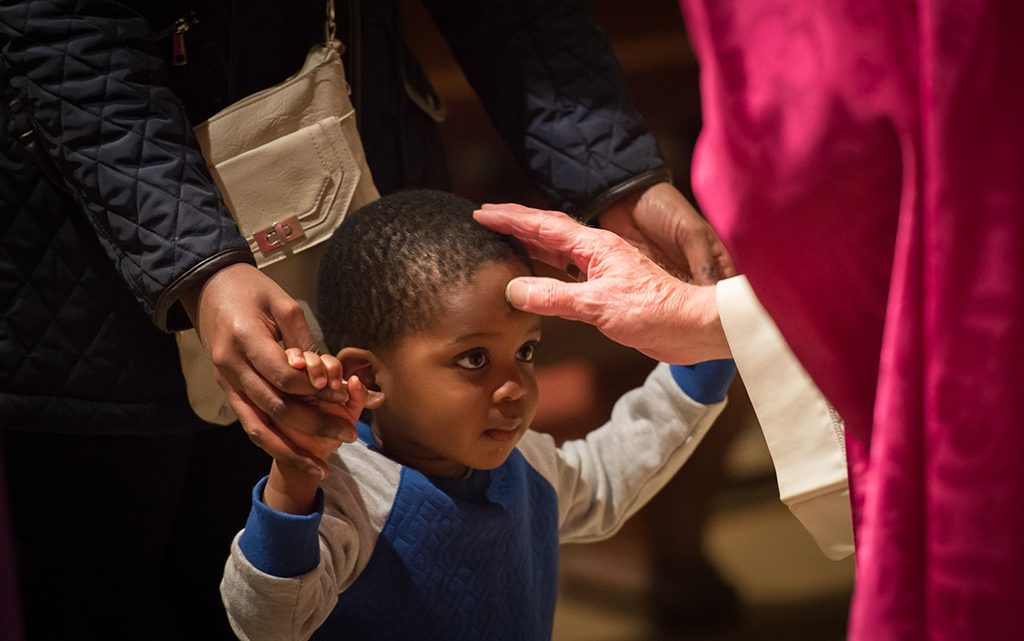
If I was given £1 for every comment on Ash Wednesday from a well-meaning non-Christian telling me I may look better if I remove the dirt smudged across my forehead, I’d be writing this from the Bahamas.
But it’s no bad thing that total strangers feel confident enough to approach us to make the point.
Ash Wednesday is one of those rare occasions when we’re given an opportunity to explain to the uninitiated that we haven’t lost our marbles and that the smudge on our foreheads was, earlier in the day, a cross etched by a priest’s thumb using the ashes of the previous year’s burnt palm leaves.
Ash Wednesday marks the start of Lent when we’re invited, for forty days, to find time for prayer and fasting. The season is dedicated to spiritual growth as we prepare to commemorate the suffering and death of Jesus Christ and the celebration of his resurrection at Easter. These six weeks mirror the amount of time that Jesus spent in the desert to fast and pray.
The Ashes, imposed on our foreheads in the sign of the cross, are an outward sign of our inward sorrow for our sins and of our commitment to Jesus as our Lord and Saviour.
Back in 2016, the Bishop of Hexham and Newcastle, the Right Reverend Seamus Cunningham, explained why we shouldn’t shy away from this visible sign of faith:
“The wearing of the ashes provides us with a wonderful opportunity to share with people how important our faith is to us and to point them to the cross of Christ.
“I invite you where possible to attend a morning or lunchtime Mass. Please try not to rub off your ashes as soon as you leave church, but take the sign of the cross to all those that you meet – in your school, office, factory, wherever you may be.
“This might just make people curious and wonder why you would do this. If you explain about Lent and Easter it might even awaken in them the questions that might lead to faith.”
What does this ancient tradition mean? How can it benefit everyone – whatever their religious or non-religious affiliation?
Over a billion people will carry this ashen mark, in the shape of a cross, placed on their forehead to signify the start of one of the longest periods of prayer and self-denial in the Christian calendar.
Ashes have been used for centuries by people of faith to express sorrow and grief for their sins and faults. Such a practice is referenced in the Bible on a number of occasions.
In the Christian tradition, the wearing of ashes is an external sign of repentance and communicates a desire to follow more closely God’s way of love and forgiveness. They also remind us, rather poignantly, that from ashes we come, and to ashes we will return.
Bishop Seamus Cunningham:
“This is an important day, but it’s not just for Catholics. Anyone can receive blessed ashes on Ash Wednesday, whether Christian or not, to express their desire to grow spiritually and to turn away from their failings, their areas of weakness and brokenness, in favour of seeking the healing and wholeness that only God can give.
“You are welcome to come along to any Ash Wednesday service and join us in taking this simple, but profound step.”
In addition to receiving ashes, Ash Wednesday is also a day of fasting and abstinence from meat. At a very simple level, Lent provides an opportunity for people to re-direct their lives towards God’s plan.
The palm leaves used to make the ashes on Ash Wednesday are used on the previous year’s Palm Sunday; on this Sunday Christians celebrate Jesus’ triumphant entry into Jerusalem, ahead of his suffering, death and resurrection.
It’s fitting to dwell on the words of Pope Francis as we travel through Lent:
“Above all I urge the members of the Church to take up the Lenten journey with enthusiasm, sustained by alms-giving, fasting and prayer.
“If, at times, the flame of charity seems to die in our own hearts, know that this is never the case in the heart of God! He constantly gives us a chance to begin loving anew.”